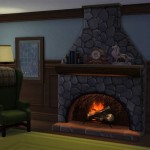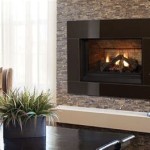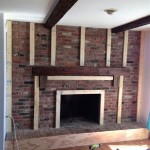Direct Vent Gas Fireplace Hearth Requirements
Direct vent gas fireplaces represent a popular heating solution for many homeowners, offering aesthetics and warmth without the complexities associated with traditional wood-burning fireplaces. These appliances operate by drawing combustion air from outside the home and venting exhaust gases directly outdoors through a sealed system. This closed combustion system enhances safety and efficiency. However, the installation of a direct vent gas fireplace necessitates careful consideration of several factors, particularly concerning hearth requirements. The hearth, the non-combustible area surrounding the fireplace opening, serves multiple crucial functions: protecting combustible flooring, providing a safe zone around the appliance, and contributing to the overall aesthetic appeal of the installation. Understanding and adhering to the specified hearth requirements is paramount for safe and compliant operation of a direct vent gas fireplace.
Understanding the Purpose of Hearth Requirements
The primary purpose of hearth requirements is to safeguard combustible materials from the heat generated by the fireplace. While direct vent gas fireplaces are designed to minimize heat transfer to surrounding areas, the fireplace opening can still radiate significant heat. If combustible flooring, such as wood, carpet, or laminate, is located too close to the fireplace opening, it could potentially ignite or degrade over time, posing a serious fire hazard. The hearth acts as a buffer, providing a non-combustible surface that can withstand the radiated heat without igniting or deteriorating. This buffer zone ensures that the risk of a fire spreading from the fireplace to the surrounding structure is minimized.
Beyond fire safety, the hearth also offers a degree of protection from accidental spills or embers that might escape from the fireplace during operation. While direct vent systems are closed, occasional sparks or debris could still be ejected. A non-combustible hearth provides an easily cleanable surface that prevents such spills or debris from damaging or staining the surrounding flooring. This aspect is particularly important in homes with delicate or expensive flooring materials.
The hearth also has a significant aesthetic component. It visually anchors the fireplace within the room and can be designed to complement the fireplace's style and the overall décor of the space. A well-designed hearth can enhance the fireplace's appearance and create a more inviting and comfortable atmosphere within the home. Therefore, while the functionality of the hearth is paramount, its aesthetic contribution should not be overlooked.
Specific Hearth Dimensions and Material Specifications
The specific dimensions and material requirements for a direct vent gas fireplace hearth are typically dictated by local building codes and the fireplace manufacturer's instructions. These requirements are not universal and can vary depending on the fireplace model, its heat output (measured in BTU – British Thermal Units), and the specific building regulations in the area. It is crucial to consult both the manufacturer's installation manual and the local building codes before installing any direct vent gas fireplace.
Generally, hearth requirements specify minimum distances that the non-combustible hearth must extend in front of the fireplace opening and on either side of the opening. These distances are designed to provide adequate protection from radiated heat and potential spills. The forward hearth extension, the distance the hearth extends out from the fireplace opening, is often the most critical dimension. This extension is designed to protect flooring from sparks and embers, as well as radiated heat. Side hearth extensions, which extend to the left and right of the fireplace opening, provide protection from radiated heat and contribute to the overall visual balance of the installation. Typically, the higher the BTU output of the fireplace, the larger the required hearth dimensions.
Regarding materials, hearths must be constructed of non-combustible materials. Common materials used for hearth construction include brick, concrete, stone, tile, and metal. These materials are able to withstand high temperatures without igniting or degrading. The thickness of the non-combustible material is also important. Most building codes require a minimum thickness to ensure adequate protection. Thin veneers or decorative surfaces may not meet the non-combustible requirements. The use of combustible materials, such as wood or carpet, within the defined hearth area is strictly prohibited.
It's important to note that certain direct vent gas fireplaces, particularly those with lower heat outputs and specific design features, might have reduced hearth requirements or even be approved for installations without a traditional hearth. These fireplaces are often designed with extra insulation or a built-in barrier to minimize heat transfer to the surrounding area. However, even in these cases, it is essential to carefully review the manufacturer's instructions and the applicable building codes to determine the specific requirements for the installation.
Compliance and Safety Considerations
Ensuring compliance with local building codes and manufacturer's instructions is paramount for the safe and legal installation of a direct vent gas fireplace. Failure to adhere to these requirements can result in serious consequences, including fire hazards, property damage, and potential legal liabilities. Before commencing any installation, it is strongly recommended to obtain the necessary permits from the local building department. These permits typically require submitting detailed plans for the fireplace installation, including the hearth dimensions and materials. The building department will review these plans to ensure compliance with local regulations.
Engaging a qualified and licensed professional for the installation of a direct vent gas fireplace is also highly recommended. Licensed professionals have the knowledge and experience to ensure that the fireplace is installed correctly and safely, in accordance with all applicable codes and regulations. They can also assist with selecting the appropriate fireplace model and hearth materials, as well as obtaining the necessary permits. Attempting to install a direct vent gas fireplace without the proper knowledge and experience can be dangerous and could lead to costly mistakes.
Regular maintenance of the fireplace is also essential for ensuring safe and efficient operation. This includes cleaning the fireplace and venting system, inspecting the gas connections, and verifying the proper operation of the safety devices. A qualified technician should perform annual inspections to identify any potential problems and ensure that the fireplace is functioning correctly. Neglecting maintenance can increase the risk of malfunctions, gas leaks, and fire hazards. The hearth itself should also be kept clean and free of any combustible materials.
It is important to remember that even with a properly installed and maintained direct vent gas fireplace, safety precautions should always be observed. Never leave a burning fireplace unattended, and keep children and pets away from the fireplace opening. Install and maintain working smoke detectors and carbon monoxide detectors in the home. Educate all occupants of the home about the safe operation of the fireplace and the proper procedures to follow in case of an emergency.
In conclusion, while the specific requirements surrounding direct vent gas fireplace hearth installations can vary, the core principles of fire safety, compliance with building codes, and adherence to manufacturer specifications are of utmost importance. A properly constructed and maintained hearth plays a vital role in protecting the home and its occupants from the potential hazards associated with fireplace operation. Thorough planning, professional installation, and ongoing maintenance are crucial for ensuring a safe and enjoyable experience with a direct vent gas fireplace.
Understanding How Direct Vent Works Heat Glo
Gas Fireplace Venting Explained Heat Glo

Vented Vs B Vent Direct Free Dixie S

What Are The Best Ways To Vent A Gas Fireplace Zoroast
Gas Fireplace Venting Explained Heat Glo

What Are The Best Ways To Vent A Gas Fireplace Zoroast

Benefits Of Direct Vent Fireplaces

Direct Vent Gas Fireplace Hearth Amp Home Technologies
Is It Necessary To Have A Hearth By Natural Gas Fireplace That 6 Inches From The Floor Quora

If You Have A Gas Fireplace It May Or Not Chimney Flue
Related Posts








